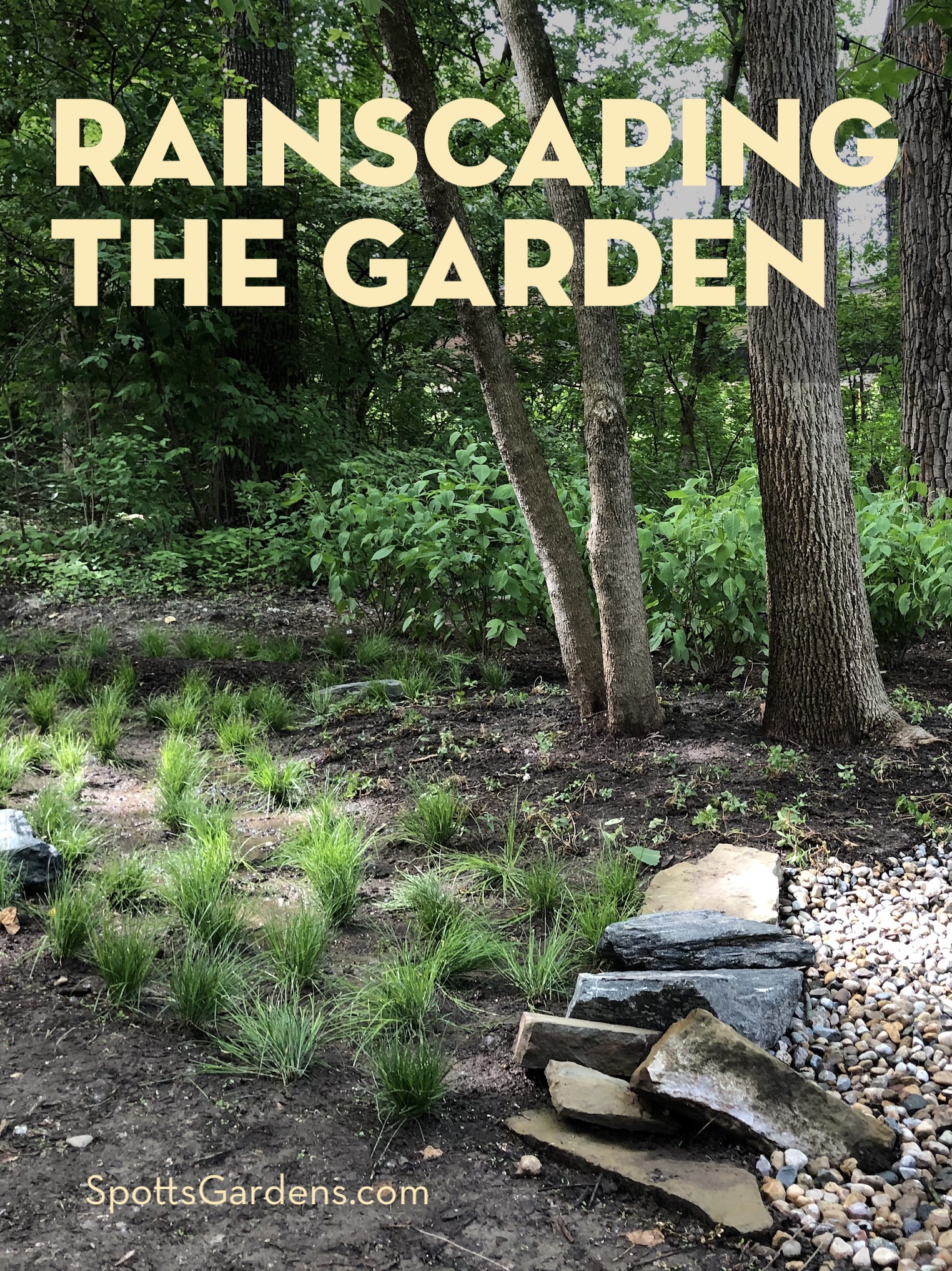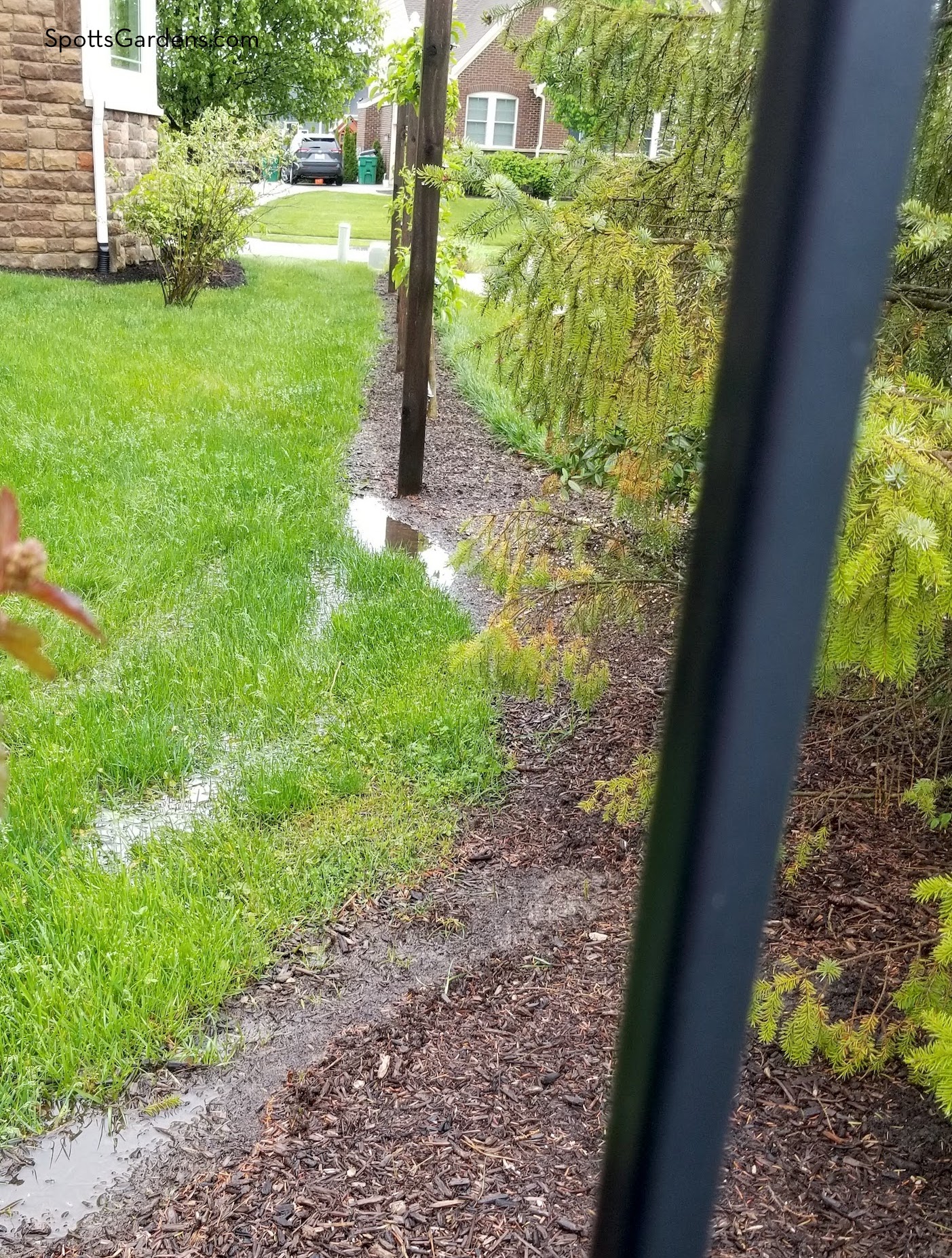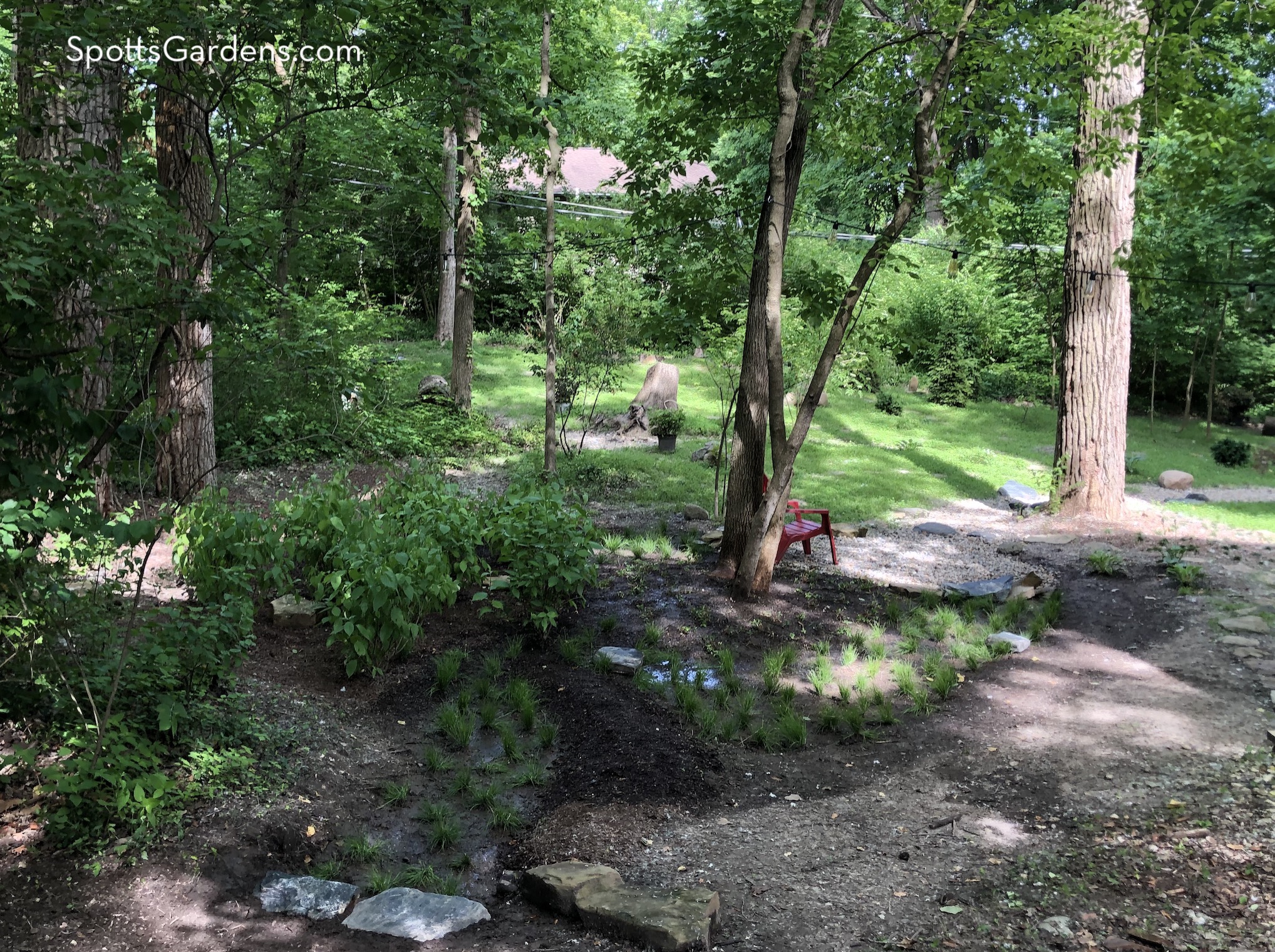The Midwest is getting wetter. According to the Fourth National Climate Assessment Report, we’re not only getting more rain, but more heavy rain events. That directly translates to more flooding, more runoff, and more erosion.
And the trend isn’t stopping any time soon. Winter and spring precipitation, which are directly related to flooding, are projected to continue to increase—by up to 30% by 2100!
So managing rainwater is becoming ever more important. And that’s exactly what we’ve been doing in gardens throughout Indianapolis—using rainscaping strategies to prevent flooding and runoff and return as much water into the ground as we can.

The Runoff Problem
When rain falls, only some of it is absorbed by the ground. Much of it hits the ground and runs off into storm sewers. The more area that’s covered by impervious surfaces (like concrete and asphalt), the more water runs off instead of soaking in.
As the water runs through the yard and pavement, it picks up garden chemicals, motor oils, pet waste, and other nasty stuff. It sweeps it all into storm sewers. From there, the untreated water spills out into freshwater rivers and streams, polluting them.
It’s even worse in cities like Indianapolis that have combined sewer overflow. When the storm sewer receives more runoff than it can handle, it floods the sanitary sewer, washing unprocessed sewage into our waterways (and sometimes backing it up into our basements).

Pooling, erosion, and channels cut through your lawn or beds are all indications of stormwater runoff.
A Sustainable Solution
Rainwater runoff happens as rainwater moves away from the place where the rain fell. The solution is to get as much of that rainwater to infiltrate back into the ground as possible. Rainscaping is any combination of strategies to manage stormwater as close to where it falls as possible, instead of moving it elsewhere.
Traditionally, people managed water by moving it away from houses with pipes, French drains, and other expensive, high-infrastructure strategies. But with rainscaping, we can often solve runoff problems with a shovel and the right plants: a cheaper and more earth-friendly solution.

In this large garden, we used a combination of rainwater management strategies: a rain garden, bioswales, stone check dams, a dry stream bed, soil improvement, and planting deep rooted natives.
Slow It Down, Spread It Out, Soak It In
Rainscaping takes a holistic approach; we look at the entire garden and figure out where the water is coming from, where it pools, and where it goes. Our goal is to slow it down, spread it out, and soak it in.
Slow it down: The ground can’t absorb fast-moving water. So we slow its speed by forcing it to run over stones, putting splash stones under downspouts, using swales on slopes, and sending it through heavily planted spaces.
Spread it out: Any given bit of soil can only take so much water, so we want to spread water over as much surface area as possible. Sometimes we use a French drain (a buried, perforated pipe) to move water to where it can soak in, but we prefer to move water on the surface whenever we can. We can:
- give water multiple channels to flow through
- create dry stream beds to guide water during big rain events
- direct water through planted bioswales
- let water to flow over the surface of the ground into a rain garden
Soak it in: To allow as much water to get back into the ground as possible, we use rain gardens. These shallow depressions (usually 6″ at deepest) are designed to temporarily hold water until it can soak into the ground, usually within 24 hours of a rain event. They’re heavily planted with native plants, which help filter out sediment and contaminants. Because they dry out quickly, they don’t harbor mosquitoes the way boggy spots can.
Other strategies to increase water infiltration include:
- improving the soil with compost and mulch so it can hold more water
- planting with deep-rooted natives and replacing turf grass with mixed plantings
- reducing the amount of impervious cover by using permeable pavers
Are You Ready to Rainscape?
We’ll help you manage rainwater in a smart, sustainable way! Contact us for a free estimate.
